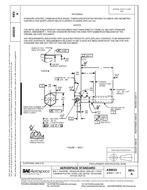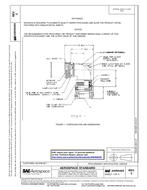Click here to purchase
The scope of this document is limited to Enhanced Synthetic Vision Systems ESVS human factors considerations and requirements in comprehension, interpretation and application of imagery and integrated symbology in Enhanced (sensor) and Synthetic (database) Vision Systems in aircraft. Any overlap into logic problems or hardware/software design should be considered to be incidental to the human factors issues. Where the performance characteristics of specific technologies are relevant they will be identified, and where performance criteria are relevant to specific intended functions/use they will be identified. From a regulatory view, intended function (Guidance or Information/Situation Awareness support) has a tremendous effect upon the design of an ESV System. However from a Human Engineering standpoint, the information on a display must be discernible and comprehensible to the human operator in both cases and differences may be primarily in information content (required to support a specific task).This document attempts to be independent of candidate technologies and concentrate on human interface criteria.Consideration of NVG use in a cockpit equipped with ESVS is beyond the scope of this document, but it should be noted that there will be significant integration/interaction issues such as black level limits and use of DTED data simultaneous with NVS. This document does not include consideration of detection and/or display of air targets or integration of systems such as TCAS.This document is a compilation of human factors recommended practices in the design of ESVS. It may be updated to reflect research and development results and as the technology improves and applications expand, the coverage of the document will be expanded.
Product Details
- Published:
- 12/18/2012
- File Size:
- 1 file , 240 KB


